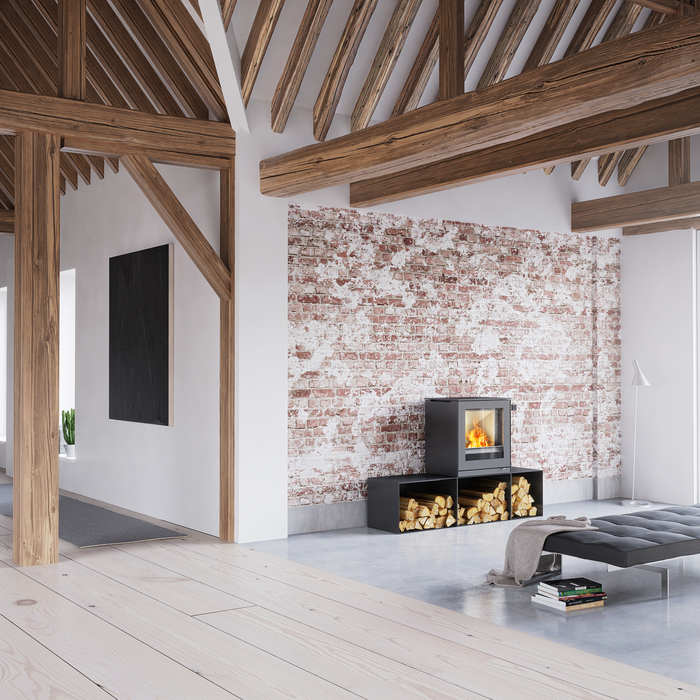You see the contents for the location:
Fire Tips
Summer is the right time to prepare for the fireplace season. We clear away the shells we collected on holiday, clean our fireplaces and: We get wood. But where is good firewood available and what characterises "good" firewood anyway?
Fuel wood is a sustainable fuel because it grows back and is considered CO2-neutral. To keep it that way, the question of where the wood is sourced is crucial. Long transport routes are ecologically questionable, lead to waiting times and drive up the price of this valuable and scarce raw material. Instead, ask private forest owners, forestry companies or your local dealer. This way, you can heat your home sustainably and economically with local wood from your neighbourhood.
For wood to be suitable for heating your wood stove or fireplace, the quality must be right. This is shown by the right type of wood, correct storage and wood moisture content.
Type of wood
Hardwoods (deciduous trees) such as beech, ash and birch provide plenty of embers and a quiet continuous burn. Softwoods (conifers) such as spruce, fir or pine are suitable for kindling. Use split wood as it provides more surface area for the flames. For a stove, the individual logs should not weigh more than 1 kilogramme. The firebox should be filled according to the stove manufacturer's specifications.
Alternatives to classic wood logs should be checked carefully. Wood briquettes, for example, produce a higher heat output than hardwood due to their density and depth of residual moisture. However, if the briquette quantity is not reduced accordingly, damage can occur in the long term due to overheating of the firebox.
Dry firewood
Burning wet wood is harmful to the environment as the optimum combustion temperature is not reached, resulting in environmental pollution. The water vapour produced when burning damp wood condenses in the flue pipe and sooting (tar formation) occurs in the fireplace. Under certain circumstances, this can lead to a chimney fire.
As a general rule, the drier the wood, the higher the usable energy content. The residual moisture content should not exceed 17 per cent. To achieve this, split hardwood must be stored dry for 2 to 3 years. The moisture content can be determined using a wood moisture meter.




Storing firewood
To ensure that the fire is a pleasure to use, the wood supply should be stored in a weatherproof place and protected from ground moisture. The logs should be stored face outwards and with sufficient space on the floor and between the logs to allow the air to circulate optimally. Damp cellars and garages are not suitable for storage.
Tip: Cold wood burns worse. Therefore, bring your firewood into a warm house a few days before use. Here it can also dry out again, which is ideal.
What does not belong in the stove
Painted, laminated, impregnated or plastic-coated wood, painted waste wood, chipboard, plywood, nutshells, pine cones, household waste, paper briquettes and coal should not be burnt.
Burning these materials not only produces unpleasant odours, but also harmful and polluting exhaust fumes that are deposited in your surroundings. Chemical reactions can cause extremely high temperatures and dangerous combustion residues to develop in the firebox even when using small quantities of prohibited fuels, which are harmful to you, your environment and your fireplaces.
Share tip